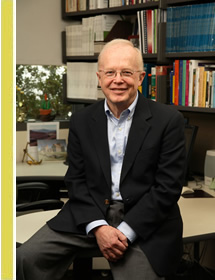The Coming World of Hearing Aid-Compatible Assistive Listening
Imagine a happier world for the mushrooming millions of people with hearing loss. In this utopia, hearing aids have doubled their present usefulness. The author describes his advocacy for audio loops and why they are effective assistive listening systems.
The Case for Hearing-Aid-Compatible Assistive Listening Audio Loop Systems (Hearing Loop Systems)
Require (for those with telecoils) no pick up or return of portable receiving units and headsets.
Require purchasing/maintaining/replacing fewer portable receiving units (for those as yet without telecoils).
Operate on a universal frequency (FM systems operate on differing frequencies, requiring receivers for each venue).
Are inconspicuous.
Work in transient situations. They can serve people with hearing loss at ticket counters, teller windows, drive-through stations, airport gate areas, and train and subway stations — venues where other assistive listening systems are impractical.
Are hearing-aid-compatible. There’s no need to juggle between hearing aids and headsets (for example, when shifting from sermon to singing during worship).
Contain sound. Because sound broadcast through hearing aids is contained within one’s ear, there is no risk of leaked headset sound bothering others nearby.
Afford flexible use. Can allow either direct listening or loop broadcast modes, or both.
Deliver personalized in-the-ear sound — sound customized by one’s own hearing aids to address one’s own hearing loss.
Are, for all these reasons, much more likely to be used — and to be increasingly used, once installed (as people purchase future aids with T-coils). Moreover, it is those who most need hearing assistance who are most likely to have telecoils. (Thanks to portable receivers, loop systems, can also serve everyone, including all who are served by existing systems.)
Click here to read the entire article by David Myers http://www.hearingloop.org/HearingLossArticle.pdf
Leave a reply

